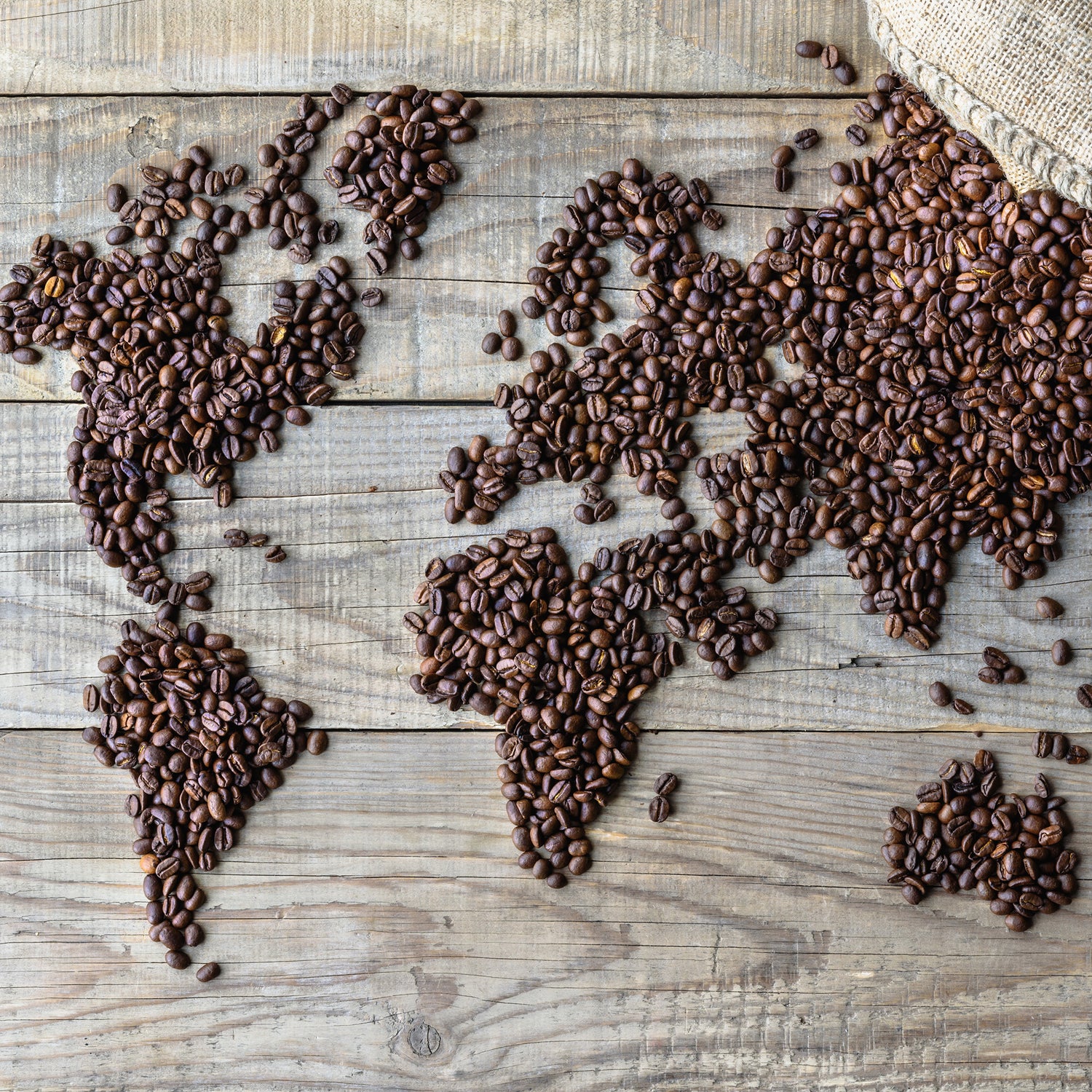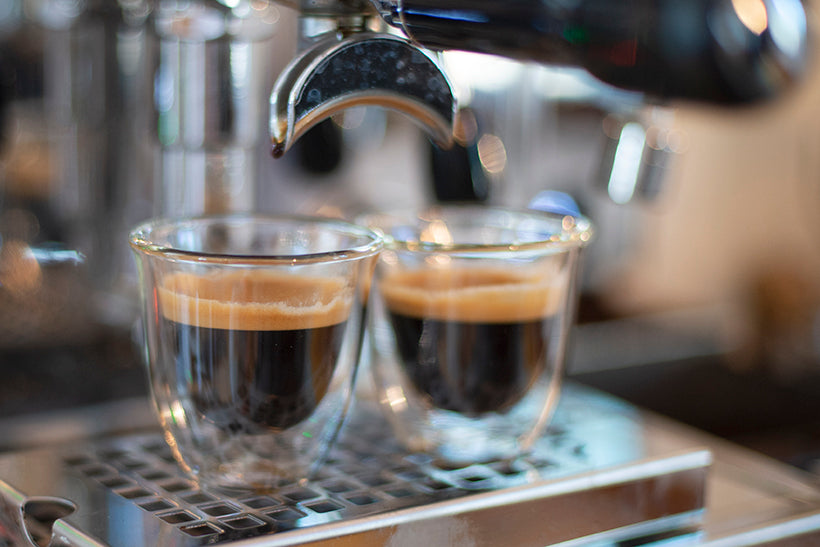
The Story of Sanctuary
Sanctuary Espresso is our best selling premium blend, designed specifically to produce a wonderful espresso experience. Here's how we came up with it.
Firstly, what exactly is espresso?
Espresso is a coffee brewing method, made by forcing very hot water through finely ground, compacted coffee. This high pressure method emulsifies the oils in the coffee into the creamy, caramel coloured 'crema' that floats on top. Angelo Moriondo from Turin invented the first 'bulk' espresso machine in 1884, with later 'single serving' machines being developed in the early 1900's. Espresso bars, café culture, and the growing popularity of cappuccino and latte style drinks have accelerated the demand for espresso around the world.

Also, make sure you say it correctly!

So what makes a great espresso?
Just like every other method of coffee brewing, there are lots of variables, and lots of opinions on how to make it best. But generally accepted rules for espresso are:
Size: Can be a single, double, or triple depending on the amount of coffee used and the basket size. In Italy people generally order single shots of espresso, un caffè 'normale'! Whereas in North America, a double shot is the norm due to the large size of most milk based drinks. A double shot of finely ground coffee usually weighs between 14g and 20g, depending on the coffee itself, and your particular machine, basket size, and water pressure. For our machine at home, I find that 18g is the sweet spot.
Length: The length of the shot (how long it is pulled) can be Ristretto (restricted), Normale (normal), or Lungo (long). A ristretto is about half the size of a regular espresso, and slightly sweeter, a lungo is about 50% larger than an espresso. Although to get a true Ristretto or Lungo, ideally you would adjust the grind size too, finer for ristretto, coarser for lungo. Given how long it takes to properly calibrate an espresso grinder, most cafés use the same espresso grind, and just pull the shot shorter or longer. Most espressos are 'pulled' for about 25 seconds.
Ratio: This is the ratio of coffee in the cup, to coffee grounds used. Generally speaking (and there are millions of webpages with opinions on this) an espresso is brewed using a ratio of 1:2 - 1:2.5. So if you use 18g of coffee, you will end up with 36g - 45g of espresso. It's important to note that the final espresso is measured by weight (g) and not volume (ml), as the amount of crema will affect the volume measurement.

What does 'Designed for Espresso' or 'Espresso Roast' mean?
A coffee's aromatics, flavour notes, acidity, and body all peak at different times during the roasting process, and the bean's structure also changes. As the inside of a coffee bean gets hot and releases steam, this weakens the bean's cellulose structure and makes it more porous and brittle. The darker and more brittle the inner beans are, the easier they are to grind finer, and the higher the extraction when brewing.
What this means is that 'espresso roasts' are generally roasted a little longer, and to a higher temperature than filter or pour-over roasts, because they extract better under high pressure due to being more soluble. The longer, hotter roast also produces less acidity, and more body (creaminess).
You can use an espresso roast for filter coffee, but it can be challenging to use a lighter filter roast in an espresso machine. It can be done, it just takes more work to calibrate and keep consistent.

If you would like to learn more about roast degree, check out our blog article here.
How do you develop an Espresso blend?
Much of the available espresso coffee in supermarkets is French or Italian roast, which is roasted to 450F-470F. By roasting to such a degree (burnt, smoky, and rancid), coffee companies can hide very poor quality beans in their blends, and then roast to such a degree that you can't taste the origins. This has been many people's staple coffee for years, not knowing that there are much nicer espresso roasts out there.
These over roasted blends are also extremely oily, which not only makes the coffee degrade faster as the oils oxidize, but also clog up grinders and automatic espresso machines quickly. This can ruin a machine without regular maintenance, and the old oils can also affect flavour.
When we developed Sanctuary, we wanted to roast lighter than store bought espresso beans, to really bring out the flavours in the blend, and we also wanted the beans to be less oily, to stay fresher for longer. So after a lot of roasting and cupping, we finalized on a blend of beans from:
- Brazil - Lower altitude beans known for their great body (mouthfeel), crema, and overall chocolatey flavour. Brazilian beans are always a good base for an espresso blend.
- Colombia - High altitude beans that bring sweet toffee, caramel, and nutty flavours.
- Ethiopia - Another premium, high altitude bean that brings a nice, creamy texture, with some citrus notes.
These three coffees combined and roasted to perfection is what makes Sanctuary such a wonderfully smooth, flavourful espresso. All of the beans are premium Arabica coffee, with no low quality fillers or Robusta.

Why the 'Sanctuary' name?
Two reasons.
Human: Because a hot coffee on a cool morning is something to snuggle up with. It's a break from the grind, a chance for some 'me time', a place of refuge from the chaos around us. Sanctuary is a good book, a great coffee, and a sleepy dog.

Animal: Because it does exactly that. It provides sanctuary to rescue dogs, which is part of our mission. We donate 20% of our profits to help rescue dogs across Canada, and seeing that all of our single origin coffees are named after their origins, when you create a blend, you get to name it! So we named it after what we do.

So there you go, now you know a bit more about Espresso, and why Sanctuary is such an amazing coffee, enjoy!
P.S. If you haven't tried it yet, buy some here!


